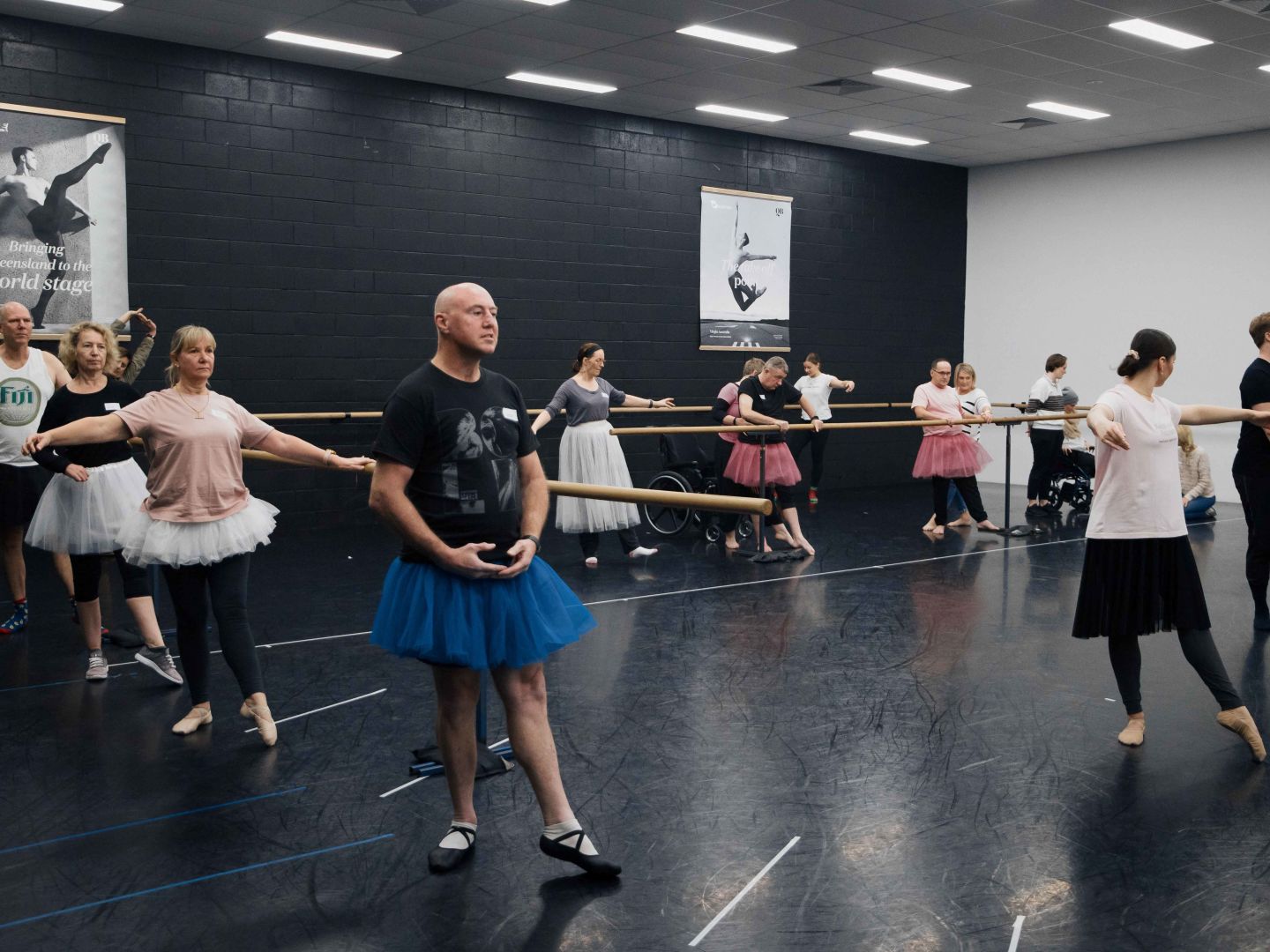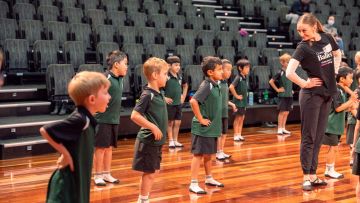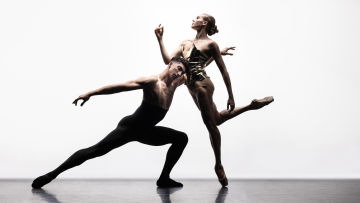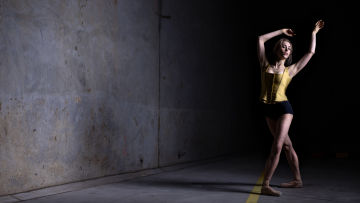Queensland Ballet develop program for brain injury

Queensland Ballet (QB) has launched a ballet program designed for people living with a brain injury.
Developed in partnership with Citrine Sun Entertainment, The Hopkins Centre and The Queensland Conservatorium Research Centre at Griffith University, the program uses ballet-based movement, music and artistry to enable participants to experience the enjoyment, creative expression and wellbeing benefits dance can bring.
QB launched a 10-week pilot program in April, which saw 10 participants with a brain injury and their carers partake in the ballet-based program. Underpinned by research, the pilot was supported by a review of existing research on dance for brain injury and related conditions by Griffith University researchers Joel Spence, Associate Professor Naomi Sunderland, Professor Elizabeth Kendall and Adjunct Research Fellow Belinda Adams.
The first of its kind, Ballet for Brain Injury aims to develop a new evidence-informed approach to engage people living with brain injuries, with the class now running weekly at QB’s West End studios.
Queensland Ballet Education Manager Martha Godber says QB is deeply committed to creative health and exploring ways that dance can be a vehicle to improve the lives of people living with injury, illness or disease.
“QB Teaching Artists have consulted with Physiotherapist Kerry Read and Occupational Therapist Peter Irving to develop a program that is tailored to the needs of the participants and ensures the class is inclusive, enhances wellbeing and provides an authentic ballet experience,” said Ms Godber.
Hopkins Centre Ambassador Ms Adams initiated the program, after experiencing first-hand the impacts of people living with a brain injury.
Ms Adams’ son Dylan sustained life-threatening injuries in a car accident in March 2012. After spending two weeks in a coma, Dylan was transferred to a Brain Injury Rehabilitation Unit.
“Being my son’s carer, I’ve learned first-hand the lack of rehabilitation options and resources for people affected and the ongoing barriers they face such as loss of identity, neurofatigue and feelings of isolation,” said Ms Adams.
Ms Adams, who is also Director of Citrine Sun Entertainment, produced a short documentary about the program, which was recently accepted into this year’s Focus on Ability Film Festival. By capturing the program on film, Ms Adams hopes to raise awareness of the invisible barriers people with a brain injury face, and offer participants a platform to share their experiences.
Professor Kendall has been co-leading the research behind the program.
“We know exercise is healthy for our brains, and for people with brain injuries the opportunity to engage in physical activity is limited, but it could really improve their rehabilitation outcomes,” said Professor Kendall.
“QB’s commitment to inclusivity is incredible. They are providing a fun way for people with brain injuries to keep healthy and could revolutionise the way we do rehabilitation in future.”
The class follows the shape of a standard ballet class, with participants starting at the barre with smaller movements before learning sequences, choreographic activities and partnering work. Beyond the ballet movement, the class has an inherent focus on creativity and social expression.
The program was developed with health clinicians, who helped inform and shape the program, as well as upskill teaching artists to work with people living with a brain injury.
Associate Professor Sunderland says accessing arts and culture is a fundamental human right for all people but particularly people with disabilities.
“Opportunities to engage in arts and cultural activities as an active participant can be limited for people who experience traumatic injury and their carers due to limits in the way programs are designed,” said Professor Sunderland.
“Ballet for Brain Injury has been developed to offer evidence-informed and flexible dance opportunities for people who have experienced brain injury and their carers. It is an incredible step forward to systematically include arts and cultural activities such as this in community rehabilitation and care,” she added.
QB hopes Ballet for Brain Injury will lead to further research in the area, with a commitment to continue delivering the classes at their studios in West End.
“We’re looking forward to continuing the program weekly at QB and welcome anyone who is interested to come along and give it a try,” said Ms Godber.
To find out more or register your interest, click here: https://www.queenslandballet.com.au/classes/qb-ballet-for-brains
Media Enquiries:
Ellen Gilroy | egilroy@queenslandballet.com.au
#Related

Media - Press Releases
Queensland Ballet Education Programs 2026 Learning through Dance

Media - Articles
2025 Wrap Up

Media - Press Releases
